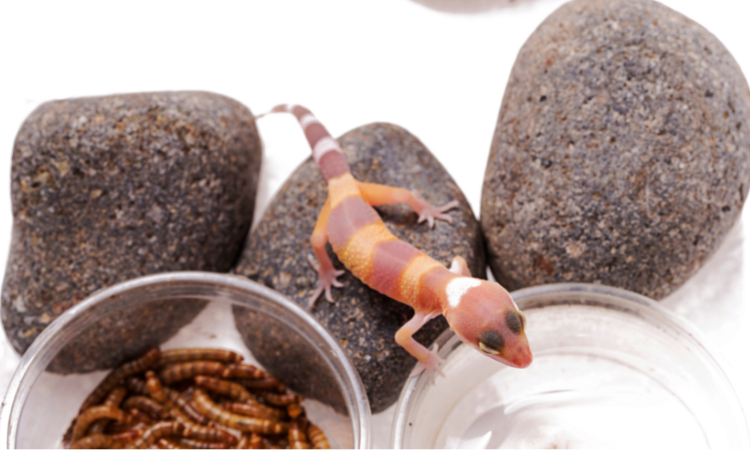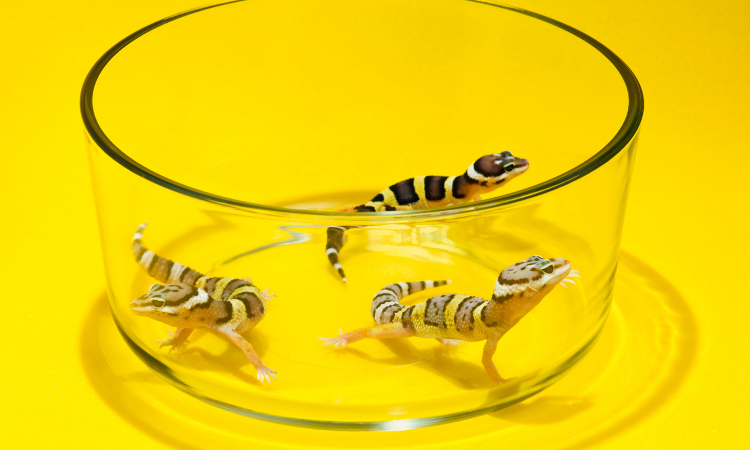Are you a new leopard gecko owner? Congratulations! Leopard geckos can make great pets and are usually very low maintenance if properly cared for. However, it’s important to know the common mistakes that many new leopard gecko owners can make – because these missteps could have serious implications for your pet.
We know how committed you are to providing the best care for your lizard friend – so in this blog post we will outline some of the most common mistakes made by new leopard gecko owners and provide helpful tips to prevent them from happening with your gecko.

Not researching the necessary care requirements and supplies
Diving into the world of pet ownership can be an exciting and fulfilling experience. However, it is crucial for prospective pet owners to be vigilant in researching the necessary care requirements and supplies before bringing a new animal companion into their lives.
Neglecting to thoroughly understand what a pet needs – such as proper nutrition, grooming and environmental needs – can lead to unfortunate consequences for both the animal and the owner.
Moreover, integrating suitable supplies such as food, toys, and habitat accessories can vastly improve a pet’s quality of life, enhancing the bond between the owner and their furry (or scaly) friend. Therefore, investing time and effort into proper research allows for a happier, healthier, and more meaningful relationship between pets and their human families.
Not setting up a proper habitat with appropriate temperature and humidity levels
Just like humans, animals of various species need a specific environment in order to thrive and maintain a healthy well-being. The lack of appropriate living conditions puts immense stress on your pets that could lead to serious health issues or even untimely death.
It is essential to research and understand the unique needs of your animals, ensuring the correct balance of temperature and humidity within their living quarters. By doing so, you enhance the quality of their lives, avoid heartbreaking losses, and enjoy watching them thrive in a comfortable, natural habitat.

Buying an unhealthy leopard gecko or one that is too young
When considering the addition of a leopard gecko to your family, it is critical to ensure that you’re bringing home a healthy and appropriately aged reptile.
Purchasing an unhealthy or immature leopard gecko can lead to a host of issues, including increased vet visits, higher stress levels for both the gecko and owner, and potential emotional distress when it comes to their well-being.
Researching reputable breeders and observing the gecko thoroughly prior to making a decision can help avoid these unsettling scenarios. Upon inspection, make sure the gecko has clear eyes, a plump tail, and is alert and responsive, and refrain from acquiring one that is less than 6-8 weeks old. By doing so, you’ll provide your new scaly friend the best chance at living a healthy and happy life by your side.
Not providing enough hiding spots, plants, and branches for your gecko to feel safe
Geckos, being naturally shy creatures, require a safe and secure environment to thrive in our homes. Neglecting to provide them with ample hiding spots,
plants, and branches can cause unnecessary stress, diminishing their overall quality of life. These shy little reptiles need a sanctuary where they can hide from perceived threats or simply relax when they desire solitude.
By incorporating features such as artificial or live plants, cavernous decorations, and branches for climbing or hiding, you can create a delightful habitat that caters to your gecko’s natural instincts.
Remember, a happy gecko is a healthy gecko, and by making their environment feel cozy and secure, you can ensure their well-being for years to come.
Overfeeding your leopard gecko and not understanding their dietary needs
One common mistake pet owners can make is overfeeding their beloved leopard gecko, without realizing the potential harm it can cause. The importance of understanding their unique dietary needs is paramount to ensuring a healthy and happy reptile.
These fascinating creatures require a balanced diet consisting of insects, along with daily vitamins and calcium supplements. By not paying attention to the proper proportion of nutrients for their pet, owners may unintentionally subject their gecko to risks such as obesity and organ damage in the long run.
It is essential for those who want to keep these incredible animals as pets to take the time to educate themselves on their dietary requirements to ensure they are providing the best possible care.
By doing so, you’ll not only cherish a thriving bond with your pet but also appreciate these magnificent creatures even more.

Handling them too often or not giving them enough time to adjust to their new environment
When introducing a new pet or plant into our lives, it’s crucial to strike the right balance between handling them too frequently and providing ample time for them to adapt to their new surroundings. It’s only natural to be excited about a new addition to our homes, but we need to remember that they require a period of adjustment in order to thrive.
By practicing patience and paying close attention to their reactions and behaviors, we can cultivate a healthy environment that allows them to settle in with ease. Gently easing them into their new surroundings, rather than smothering them with excessive handling, is the key to ensuring their happiness and well-being in the long run.
Remember, juggling between providing love and understanding their need for personal space is the mantra to a harmonious relationship with our new companions.
Owning a leopard gecko is a big undertaking but an incredibly rewarding one. It is important for new pet owners to do their research and ensure that their geckos have the necessary care requirements and supplies to stay healthy and thrive.
Additionally, make sure you have an appropriate habitat setup with sufficient temperature, humidity levels and plants, branches, and hiding spots for your gecko to feel safe. Be aware of their dietary needs and provide them with adequate meals that are nutritionally rich.
Finally, it is essential to not handle them too often or too harshly as they will need time to get comfortable in their new environment before being handled routinely. With the right knowledge on providing adequate care alongside patience and love, leopard geckos can be happy additions to any family.
Related posts:

Hi – I’m Erika, the lead gecko enthusiast here at Geckopedia! I write articles about pet geckos, including what to feed your leopard gecko and how to help your pet gecko live a long, happy life! I graduated with advanced degrees from UC-Berkeley, the University of Southern California (USC) and Indiana University-Bloomington, where I studied Biology and Animal Science. I use my experience to help others learn about gecko care, and I am an advocate for all topics gecko related!
